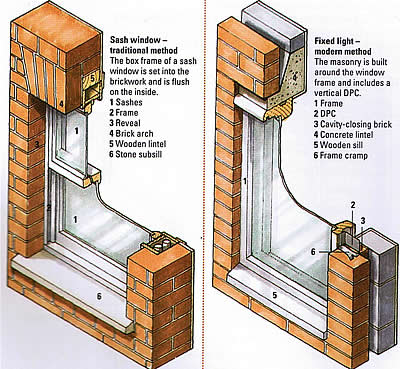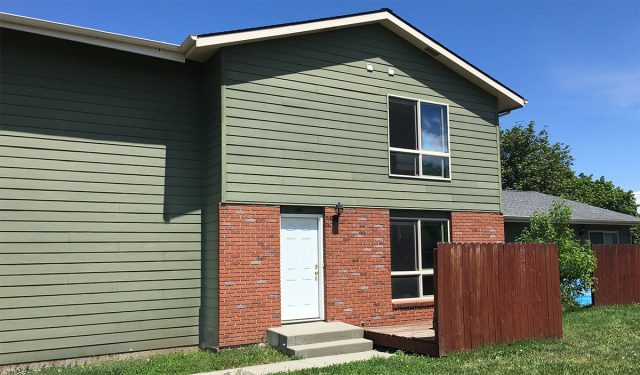 Donald Trump’s discarded campaign slogan to Make Bricks Honest Again will never happen. Bricks will forevermore be a durable veneer mimicking our fondness for the past. And slowly I am starting to succumb to this realization. Honestly, bricks will never be an honest material, again.
Donald Trump’s discarded campaign slogan to Make Bricks Honest Again will never happen. Bricks will forevermore be a durable veneer mimicking our fondness for the past. And slowly I am starting to succumb to this realization. Honestly, bricks will never be an honest material, again.
Bricks are one of the oldest and cheapest building materials. Bricks are excellent in compression, and were constructed for centuries by skilled masons to construct our greatest temples and our country houses. However, these skilled masons have nearly been eradicated from society. Donald Trump’s other campaign slogan to Make America Great Again also has its detriments. The manufacturing jobs that once made America great have either been outsourced to other countries or completely eliminated by automation. However, bricks have been eradicated, not by automation, but because it takes considerably less skill to attach polystyrofoam to a wall and paint it with acrylic polymer paint.
Also, since only other architects read blogs about architecture, I realize polystyrofoam is not an actual building product. But if my Grandma is reading this blog, my main premise is that synthetic polymers made from the monomer styrene coated with an acrylic-based elastomeric textured finish is the opposite of kiln-fired, or sun-baked, natural elements: called brick.1
In our capitalist society, the cheapest option that adheres to the basic aspects of shelter, and meets minimum code requirements, becomes our preferred option. Therefore, non-recyclable plastics have (literally) become a cheaper option than dirt.
Our plasticized society has eradicated brick due to cheapness, but also because of warmth. Sadly, we Americans also want our houses insulated! When I lived in the coldest place on earth (Alaska) some houses didn’t have insulation in the walls. OK. they had insulation in half of the walls, but ran out of materials on the last barge shipment so just didn’t insulate the rest of the structure. We no longer will tolerate living in these cold structures, so we demand insulation in not just a couple walls, but EVERY wall. America can no longer be great again, because America no longer will settle for lack of insulation or disregard building codes. Yet, through these systems we have sacrificed the actual aesthetic quality of the structure – the heralded brick.
Therefore, new buildings with brick are not constructed as a permanent and enduring wall. They are attached to the outside of a house like a durable alternative to vinyl siding. It turns out that air and fluffy fiberglass with the Pink Panther logo are great insulators of walls. Double-wythe brick walls were originally constructed as two courses of brick locked together for increased durability. Eventually, metal ties were engineered to separate these 2 brick walls: an exterior wall with an insulating air gap, and an interior brick wall. But then material scientists had to create plastics, which led to Barbie dolls, GI Joe’s, the Ninja Turtle Van that could throw mini plastic pizzas, and whatever goes inside of buildings. Thus, constructing two brick walls became a useless waste of finances.
I imagine developers in the early twentieth century just settled for the fact that they had to build 2 walls. Perhaps, I am just sad that no one in the future will rip the drywall off of an interior wall to re-decorate and discover a beautiful, albeit crumbling, brick wall beneath.

Interior brick walls are irrelevant as an actual structural wall. Wood 2×4’s and gypsum wall board are cheaper and require no skill. I guess I should be cautious in my blanket statements about the lack of skills needed by 21st century carpenters. I realize nails and wood require some skill and experience. I am afraid if I were to construct a wall it would, most likely, suffer the same consequence as the shelves I mounted; collapsing with a racket in the middle of the night – jarring everyone awake searching for the cat, because instead of blaming one’s carpentry skills it must’ve been a 10lb 11oz. cat up to no good.
Moral of the story: Cat’s are usually snoozing peacefully, and you need to purchase a quality stud-finder.
Second Moral of the story: Light-framed wood construction requires some skill, but it is still cheaper than building two brick walls with tie-backs to resist potential super-volcanic-earthquake-eruptions as a result of living near the caldera named Yellowstone National Park.
The reverent Louis Kahn2 would often pontificate about his experiences talking to inanimate objects. In his most famous lecture he spoke to a brick.
“If you think of Brick, you say to Brick, ‘What do you want, Brick?’ And Brick says to you, ‘I like an Arch.’ And if you say to Brick, ‘Look, arches are expensive, and I can use a concrete lintel over you. What do you think of that, Brick?’ Brick says, ‘I like an Arch.’ And it’s important, you see, that you honor the material that you use.“
This statement never left me with a sense of profoundness. Perhaps he was a better orator than his quoted words, because this quote always conjured images of a Disney fairytale – with Louis Kahn as an architectural caricature equivalent to Cinderella chatting with forest creatures.
However, his continuing conversation is rarely quoted where he states, “Well we have a lot of material around, we can do it one way, we can do it another. It’s not true. You can only do it if you honor the brick and glorify the brick instead of just shortchanging it or giving it an inferior job to do, where it loses its character.“
Louis Kahn believed that the proliferation of concrete lintels would devalue the amazing compressive and aesthetic properties of brick. Instead of a concrete lintel, now many lintels are styrofoam with a limestone stucco finish coat to mimic the appearance of concrete. We no longer understand bricks character; furthermore, brick has jumped from the lintel to an exterior wainscoting wallpaper.

Honoring the traditional appearance of the brick will maintain the character of brick. Seriously, instead of placing brick on a portion of your wall – clad the entire wall with brick. Or terminate the brick into inside corners. And place a cap on the top of the bricks – because wood siding should not be thicker than a 3 3/8″ brick. Undoubtedly, brick is more expensive than vinyl siding – but shortcuts in the application of the brick will actually devalue the appearance of your house more than cladding the entire structure in vinyl.
Much to the chagrin of Louis Kahn – brick will never be an honest material again. Louis Kahn lived in a disparate world, a fantasy land with talking bricks, yet the basic intrinsic properties of materials was heralded.
However, let’s combine the fantasy land with our current reality. Let’s pretend that all brick structures are constructed to what they say they want. Therefore, make the brick lintel – but support it with a steel angle. Construct the brick arch – but infill the light-framed walls with insulation. Pull the wool over everyone’s eyes and convince them that the faux-brick is actually solid masonry. And maybe, just a little, I am succumbing to this new reality.
Footnotes:
Click the purple numerals to transport between hyperlinks
1 I was going to add this paragraph to my footnotes, but nobody reads these footnotes. Therefore, all of my witty witticisms are lost upon my tens of readers. Also, I spend an incredible amount of time making sure you can click the footnote numbers to bounce back and forth between the paragraphs and the footnotes without losing your place within the page. So try the footnotes please. :) Smiley face emoji.
2 Not to be confused with the Revenant Leonardo DiCaprio.
http://hopeforarchitecture.com/
I think this guy is incredible. I think like last time I posted here I am beating the drum for the traditionalists, not exactly my style but the honesty wins me over. I would love to build something that lasts hundreds of years rather than something fully designed to fully depreciate over 27.5 years.
“Subverting our disposable architecture with an act of permanence.”
I think Aravena’s current Venice Biennial is responding to this same desire to (once again) make architecture with traditional materials.
In an (un)related tangent:
Architects are slowly mimicking the Chef & Restaurant community. Whereas food and architecture are 2 of the only professions “consumed” daily. Chef’s (now) constantly show how they make their recipes (instead of trying to plead your Great-Grandmother for her recipe cards) – and it’s actually created more demand for their restaurants. Similarly, architecture has been hiding behind a veil, where trade secrets, and design processes are hidden – and it’s actually de-valued the profession. Why do we need architects? – when contractors can just apply EIFS to any structural box.
Furthermore, the Slow Food, organic, local, non-GMO, Gluten-Free, Paleo, & all related food lifestyles have responded to the harmful products mass-produced and pushed upon consumers. I think it’s only a matter of time before people will respond accordingly to the harmful, ill-conceived, and ugly building products used today in architecture… Or for the ‘Hope for Architecture’and the stone mason’s job security – they can hope.